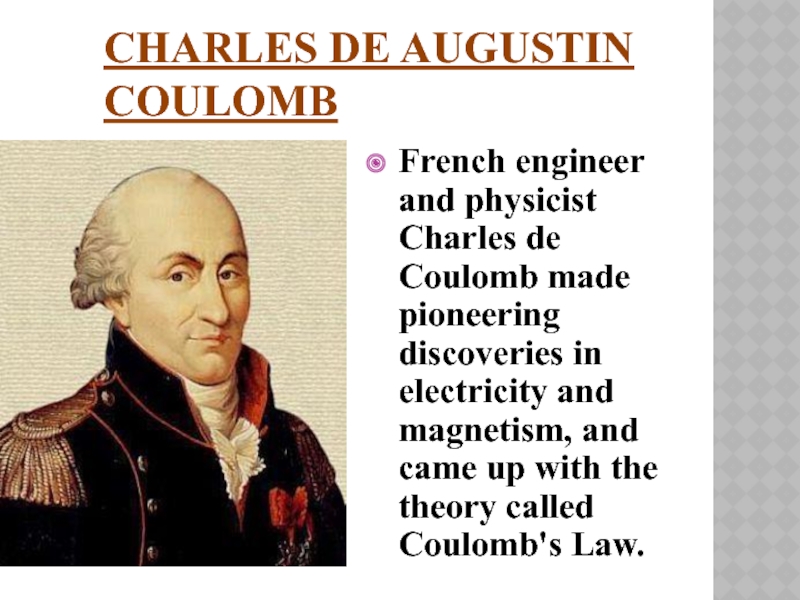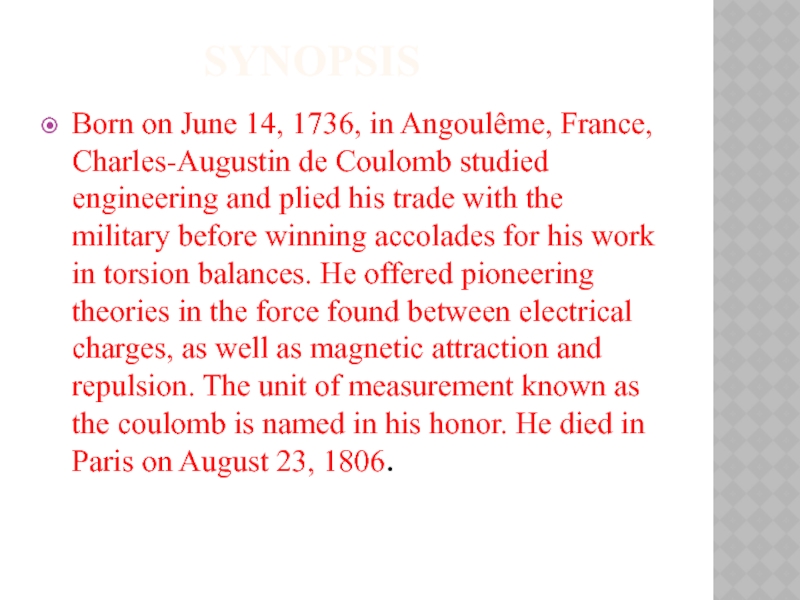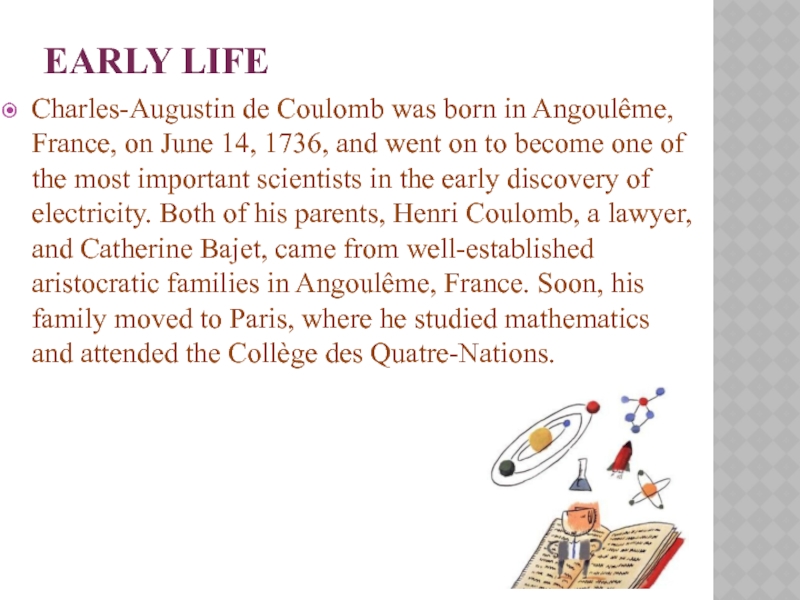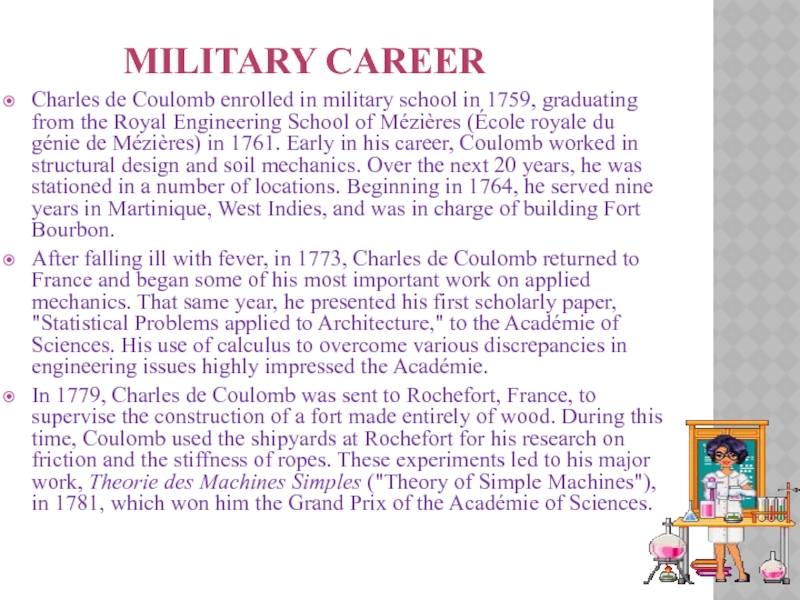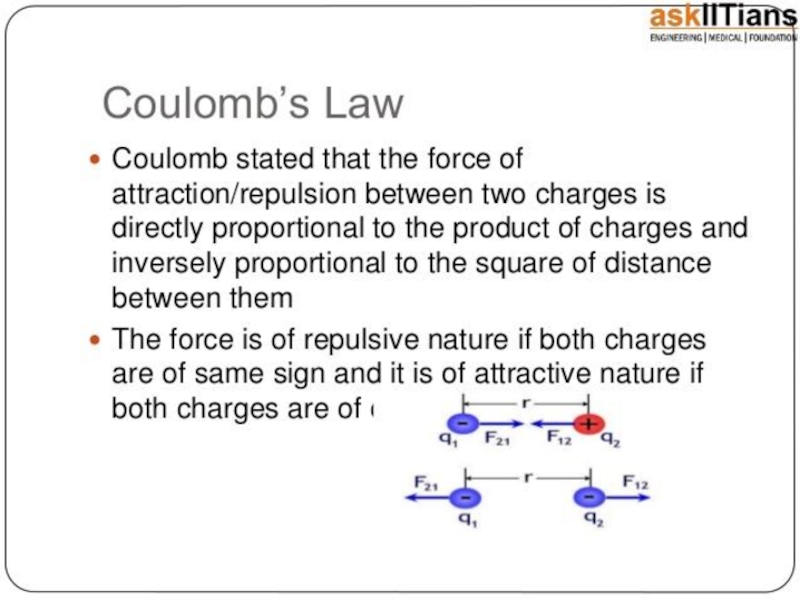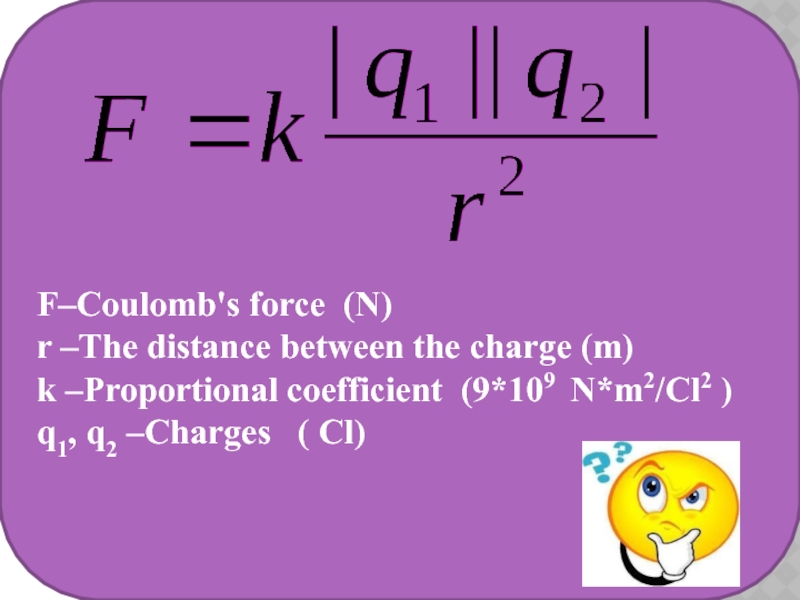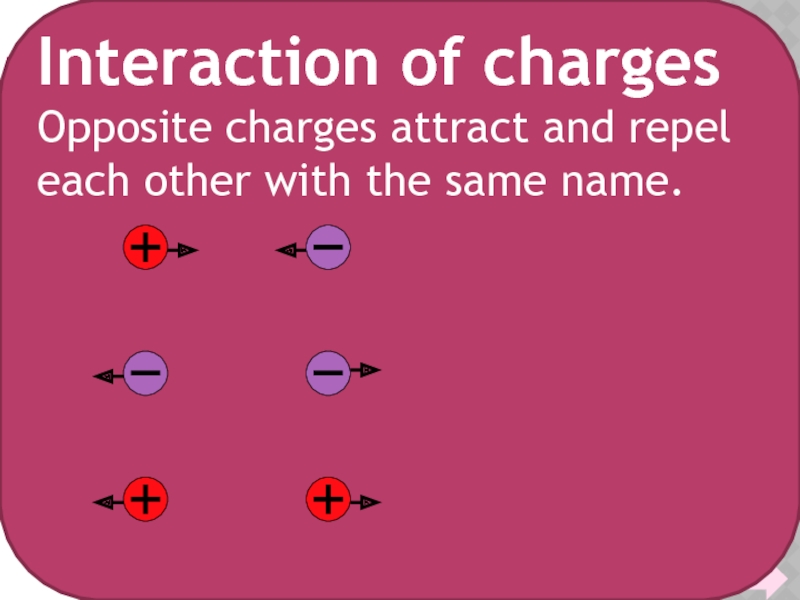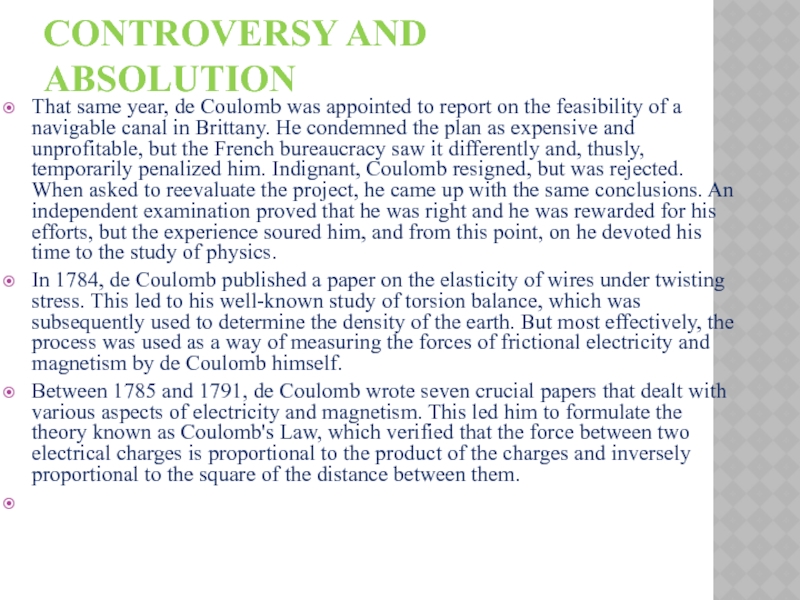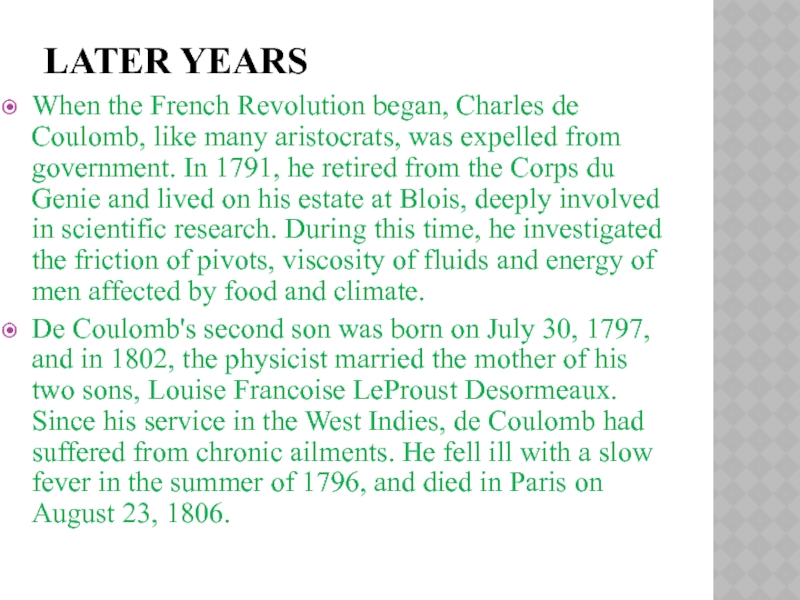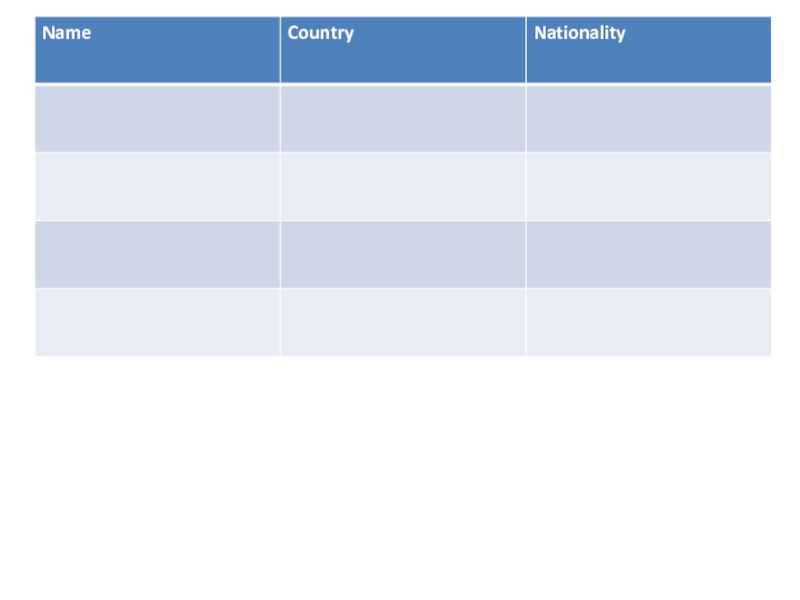- Главная
- Разное
- Дизайн
- Бизнес и предпринимательство
- Аналитика
- Образование
- Развлечения
- Красота и здоровье
- Финансы
- Государство
- Путешествия
- Спорт
- Недвижимость
- Армия
- Графика
- Культурология
- Еда и кулинария
- Лингвистика
- Английский язык
- Астрономия
- Алгебра
- Биология
- География
- Детские презентации
- Информатика
- История
- Литература
- Маркетинг
- Математика
- Медицина
- Менеджмент
- Музыка
- МХК
- Немецкий язык
- ОБЖ
- Обществознание
- Окружающий мир
- Педагогика
- Русский язык
- Технология
- Физика
- Философия
- Химия
- Шаблоны, картинки для презентаций
- Экология
- Экономика
- Юриспруденция
Charles de Coulomb презентация
Содержание
- 1. Charles de Coulomb
- 2. French engineer and physicist Charles de
- 3. SYNOPSIS Born on June 14, 1736,
- 4. EARLY LIFE Charles-Augustin de Coulomb was
- 5. MILITARY CAREER Charles de Coulomb enrolled
- 7. F– Кулон күші , Coulomb's force (N)
- 8. INTERACTION OF CHARGES Opposite charges attract and
- 9. CONTROVERSY AND ABSOLUTION That same year,
- 10. LATER YEARS When the French Revolution
Слайд 1South Kazakhstan State Pedagogical University
Theme: Charles de Coulomb
Group:110-25
Prepared by:Makhash A.
Received:Barysova N.
Слайд 2
French engineer and physicist Charles de Coulomb made pioneering discoveries in
CHARLES DE AUGUSTIN COULOMB
Слайд 3SYNOPSIS
Born on June 14, 1736, in Angoulême, France, Charles-Augustin de Coulomb
Слайд 4EARLY LIFE
Charles-Augustin de Coulomb was born in Angoulême, France, on June
Слайд 5MILITARY CAREER
Charles de Coulomb enrolled in military school in 1759, graduating
After falling ill with fever, in 1773, Charles de Coulomb returned to France and began some of his most important work on applied mechanics. That same year, he presented his first scholarly paper, "Statistical Problems applied to Architecture," to the Académie of Sciences. His use of calculus to overcome various discrepancies in engineering issues highly impressed the Académie.
In 1779, Charles de Coulomb was sent to Rochefort, France, to supervise the construction of a fort made entirely of wood. During this time, Coulomb used the shipyards at Rochefort for his research on friction and the stiffness of ropes. These experiments led to his major work, Theorie des Machines Simples ("Theory of Simple Machines"), in 1781, which won him the Grand Prix of the Académie of Sciences.
Слайд 7F– Кулон күші , Coulomb's force (N) r – нүктелік зарядтардың
q1, q2 – зарядтар, Charges ( Cl)
F–Coulomb's force (N)
r –The distance between the charge (m)
k –Proportional coefficient (9*109 N*m2/Cl2 )
q1, q2 –Charges ( Cl)
Слайд 8INTERACTION OF CHARGES
Opposite charges attract and repel each other with the
Interaction of charges
Opposite charges attract and repel each other with the same name.
Слайд 9CONTROVERSY AND ABSOLUTION
That same year, de Coulomb was appointed to report
In 1784, de Coulomb published a paper on the elasticity of wires under twisting stress. This led to his well-known study of torsion balance, which was subsequently used to determine the density of the earth. But most effectively, the process was used as a way of measuring the forces of frictional electricity and magnetism by de Coulomb himself.
Between 1785 and 1791, de Coulomb wrote seven crucial papers that dealt with various aspects of electricity and magnetism. This led him to formulate the theory known as Coulomb's Law, which verified that the force between two electrical charges is proportional to the product of the charges and inversely proportional to the square of the distance between them.
Слайд 10LATER YEARS
When the French Revolution began, Charles de Coulomb, like many
De Coulomb's second son was born on July 30, 1797, and in 1802, the physicist married the mother of his two sons, Louise Francoise LeProust Desormeaux. Since his service in the West Indies, de Coulomb had suffered from chronic ailments. He fell ill with a slow fever in the summer of 1796, and died in Paris on August 23, 1806.

